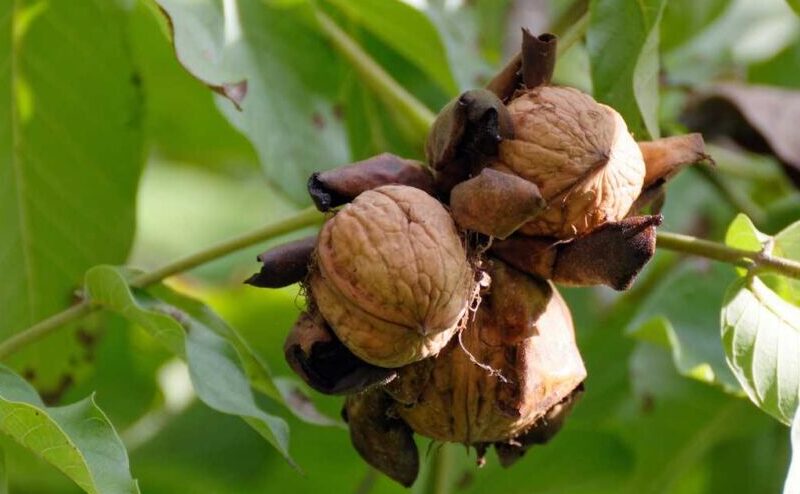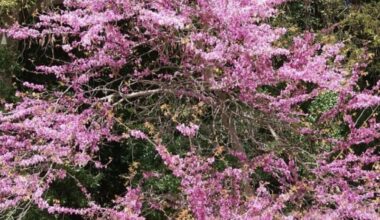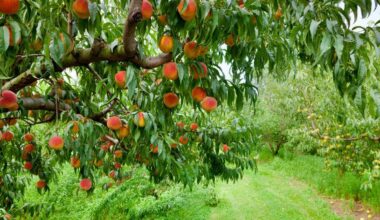The walnut tree has a strong taproot, the sowing in pot is a method of multiplication which allows to control its development well. It is also possible to sow directly in the ground. Sowing is best done on typical species as hybrids give more random results.
Contents
When to sow the walnut ?
Sow in the ground or in a pot in spring after winter stratification of the nuts.
In which climate should I plant and harvest walnuts?
It is often recommended to grow walnut trees in a mild climate. However, once they are well rooted, they can withstand very low temperatures. It is, more, the great periods of drought which are the most to fear!
Stratification is necessary before sowing walnut trees
The stratification consists in softening the shell of the walnut which serves as a protection. In nature, stratification is usually done under the leaves or in the moss.
However, it is rare that a nut germinates under the walnut tree because of juglone, a substance that walnut trees secrete to prevent other plants from growing or germinating near the tree. The walnut tree is caught in its own trap!
The walnut tree needs space to develop and makes sure that no other plant comes to disturb it. It is a loner.
How to stratify a walnut ?
- Choose beautiful nuts.
- Use a planter, preferably made of soil or plastic.
- Drain the bottom with shards.
- Cover with 6 inches of river sand.
- Place the nuts one by one on the sand.
- Cover the nuts with sand.
- Attach a small mesh screen to the planter to prevent rodents from taking the nuts.
- Place the planter on the north side outside.
How do I seed walnut trees?
The first thing to do is to find fresh, natural walnuts. This can be more difficult than it sounds because almost all the shelled nuts we find on the market are processed and certainly won’t germinate. In any case, we need to find seeds that have not been processed.
They must be natural, not roasted, not heated. It is best to find to harvest fresh peeled nuts (we can carefully remove, wearing gloves, the green outer shell and keep the brown and hard shell).
Once we find our natural seeds in the fall, we must choose 10-15. If all goes well, only 50% of them germinate or less and only a fraction will manage to produce a shoot, then a shrub. First, we immerse the peeled nuts in water for 48-72 hours.
Then we place them in a plastic bag filled with moist sand and put the bag in the refrigerator for 12-15 weeks. Alternatively, we can plant our seeds directly in the field during the fall and winter, but in this case they will not be protected from squirrels and other enemies.
About 12 to 15 weeks later, some nuts germinate normally. We plant directly on the ground (in areas with mild winters) or in individual pots containing a special soil mixture (soil mixed with river sand and compost, etc.).
We must plant the seeds superficially, at a depth of 1 inch and cover them lightly with soil. Then we place the pots at room temperature, near a large window, so that the young shoots have enough sun. The most important thing from here is to keep the soil moist but not spongy.
When the shoots reach a height of 6 inches in spring, we can transplant them in a bigger container or directly in the field, if the last frost is over.
Sowing in pots
- Fill the bottom of the pot with a layer of clay balls.
- Add some special seedling soil and plant the nut under 2 inches of the same soil.
- Pack the soil lightly.
- Water.
In the ground
- Loosen and weed the soil and add some sand and compost.
- Plant the nuts 2 inches deep, two at a time, spaced 4 inches apart.
- Keep a distance of at least 7 meters between the seedlings.
- Pack lightly.
- Water.
How to care for a walnut tree
Depending on the age and size of the tree, you may not be able to significantly treat disease or insect infestations on a walnut tree.
Larger trees have very long, deep root systems that can usually protect them from surface moisture problems. But after very prolonged dry spells, your trees may need a lot of watering. You may end up with “burnt” walnuts at harvest time because you are not watering your trees enough.
Walnut trees should grow naturally without pruning.
Harvesting and storing nuts
At first, your tree will produce round green “fruits” that look a bit like ping-pong balls. These are the nuts. The green outer shell actually has the nut inside of it. To harvest, you have to wait until the fruit is ripe enough that it will fall off the tree by itself. You don’t choose. This can be a messy and unpredictable nut harvest.
As they ripen, the green hulls spread out and turn black. This is when they will stain everything they touch, including your hands. Don’t leave your nuts inside the hulls for too long. The oils will seep through the nutshell and kill the flesh of the nut. Remove the nuts from the shell as soon as they fall off the tree.
Removing the shells can be a chore. Rolling them off a hard surface (driveway, sidewalk, large stones) with your foot is a common method. However, you will need to put your full weight behind it. Nuts and shells will stain your work area, so be careful where you open them.
Inside the shells, you will find the whole nut in its shell. Wash the shell remnants and keep your harvest somewhere warm and well ventilated for a few weeks. Warmer temperatures will result in a shorter drying time. You can check for proper drying by opening a nut and testing the small, hard skin that separates the two halves of the nut meat (sometimes called the septum).
This part should be hard and clean. If it is still tender, your nuts are not dry enough. Fresh nuts will not have the same flavor, although they can definitely be eaten.
After that, dried nuts still in their shells can be stored for a year.









